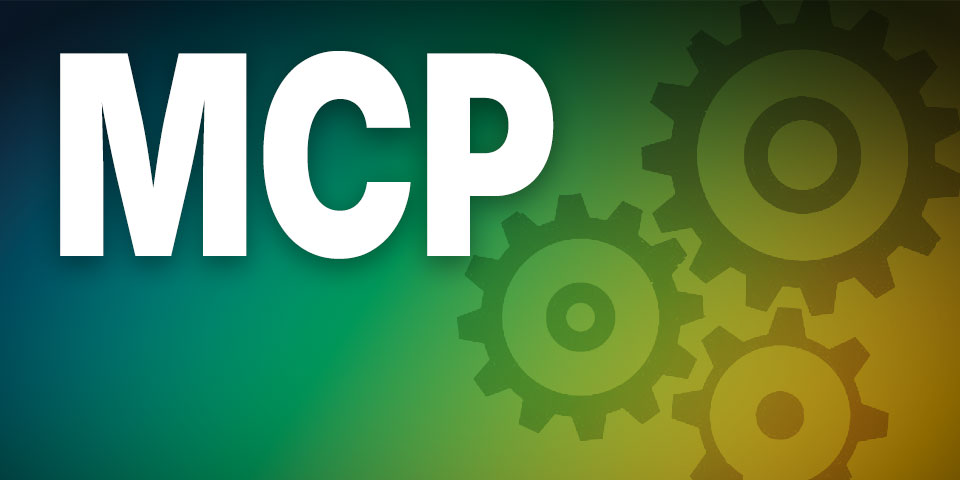
MCP: The Future of AI Integration
The Model Context Protocol (MCP) is quickly emerging as the standard that defines how AI tools interact with external applications, unlocking a new era of intelligent, composable software.
What Exactly is MCP?
Think of MCP as a “universal plug” for AI, much like USB-C for devices, allowing AI models to seamlessly connect to various apps, services, and data sources without custom integrations. Originally introduced by Anthropic in late 2024, MCP has rapidly gained momentum, especially after being adopted by key players such as OpenAI.
At its core, MCP provides a standardized framework to extend the functionality of AI assistants by enabling them to take actions across multiple external systems. It defines how AI “hosts” (like Claude Desktop, Cursor, or other IDEs) communicate with “servers” (extensions providing external capabilities) through a structured protocol.
The Core Components of MCP
MCP’s architecture revolves around three key elements:
- Hosts (Applications): User-facing applications such as Claude Desktop or Cursor IDE.
- Clients: Built into hosts, clients manage communication with MCP servers.
- Servers: External programs exposing capabilities (tools, resources, prompts) via the MCP interface.
MCP supports these core functionalities:
- Tools (model-controlled): Functions the AI can invoke (e.g., sending Slack messages, creating database records).
- Resources (application-controlled): Data sources available to the AI (e.g., files, URLs).
- Prompts (user-controlled): Predefined interactions optimized for the AI to use.
Why MCP Matters: The Problem it Solves
Before MCP, integrating AI with external tools required custom integrations for every app. Connecting AI assistants to Slack, GitHub, databases, or design tools required unique implementations for each service, resulting in an inefficient, fragmented approach.
MCP addresses this by standardizing the interactions into a unified protocol. Developers build an MCP server once, and it becomes instantly usable by any AI client supporting MCP, drastically simplifying integration.
Instead of the previous scenario of N×M integrations (N tools, M AIs), MCP turns it into an N+M problem, one standard, many interactions.
MCP in Action: Real-World Examples
The rapid adoption of MCP has already led to thousands of practical use cases. Here are some illustrative examples:
- Google Maps MCP: Find locations, provide route information.
- Slack MCP: Send or read messages directly through an AI.
- Memory MCP: Remember and recall information across AI sessions.
- Figma MCP: Manipulate designs directly from an AI prompt.
- Zapier MCP: Integrate with over 8,000 apps, automating tasks across software.
These examples demonstrate MCP’s power in orchestrating complex workflows simply through natural language instructions. A more comprehensive list of MCP servers is available in the Model Context Protocol GitHub repository.
Why Developers Love MCP
MCP significantly lowers the barrier to creating powerful AI-driven workflows:
-
Integration and chaining: MCP enables AI hosts to combine outputs from multiple servers seamlessly. For instance, a single AI command like “organize team dinner” could involve querying preferences stored via Memory MCP, selecting a restaurant via Google Maps MCP, booking via OpenTable MCP, and notifying the team via Slack MCP.
-
Standardized, open extensibility: Because MCP is an open standard, developers only need to implement it once. Any AI host that speaks MCP can immediately utilize their service. This avoids platform lock-in and encourages rapid adoption.
-
Dynamic discovery: MCP clients can dynamically discover available servers and their capabilities, enabling flexible and adaptive tool usage.
How MCP Changes AI Development
From “Tools” to Dynamic Interaction
Before MCP, AI tools were typically rigid, developer-focused, and inflexible. MCP brings user-centric, dynamic interaction, allowing users to customize their toolsets easily.
Building a Mesh of AI Agents
MCP facilitates an interconnected ecosystem where AI agents can both provide and consume services. For example, an IDE could ask a code assistant for help debugging via MCP, then submit the result to GitHub, creating a dynamic mesh of intelligent agents collaborating seamlessly.
Real-World Benefits: A Daily News Assistant Example
Here’s a practical scenario illustrating MCP’s simplicity:
- Use Memory MCP to store user preferences (topics, interests).
- Integrate web search MCP to pull personalized news each morning.
- Avoid duplicate content by remembering past articles.
- Enhance with MCP servers for Google Tasks and Calendar to provide actionable insights and daily planning within the same interaction.
Without MCP, building this daily assistant would require substantial custom coding and integrations. MCP simplifies this dramatically, turning complex automation into a few lines of natural language instruction.
Current Challenges and Limitations
Despite its strengths, MCP is still maturing, and several challenges remain:
- Security and authentication: Standardized mechanisms for secure and authenticated MCP interactions are needed.
- Dynamic discovery improvements: Better ways for AIs to discover MCP servers on-the-fly are required.
- Performance and latency: Real-time responsiveness across multiple MCP servers can still be improved.
Future Directions for MCP
The community is actively working on addressing these challenges. Key areas of development include:
- Unified authentication: Establishing standardized security frameworks (e.g., OAuth 2.1).
- Enterprise MCP gateways: Providing centralized management of MCP servers within organizations.
- Optimized agent models: Fine-tuning AI models specifically for MCP interactions.
How MCP Affects You
Whether you’re an engineer, designer, or business leader, MCP is poised to reshape your workflows:
- Engineers: Consider exposing your application capabilities via MCP to instantly integrate with emerging AI tools.
- Designers & product teams: MCP allows rapid prototyping and real-time design updates through direct AI-to-tool interactions.
- Businesses: Leverage MCP-enabled AI tools for automating complex tasks without custom integrations.
Final Thoughts
MCP represents a foundational shift in how AI integrates into our daily software usage, breaking down barriers between applications and AI tools. Just as APIs revolutionized web development, MCP is paving the way for a new era of intelligent, composable workflows. The AI assistant of tomorrow won’t just provide insights, it will take actions across multiple systems, orchestrated seamlessly through natural language interactions.
Now is the time to start experimenting and integrating MCP into your workflows, staying ahead as this powerful protocol reshapes our digital ecosystems.